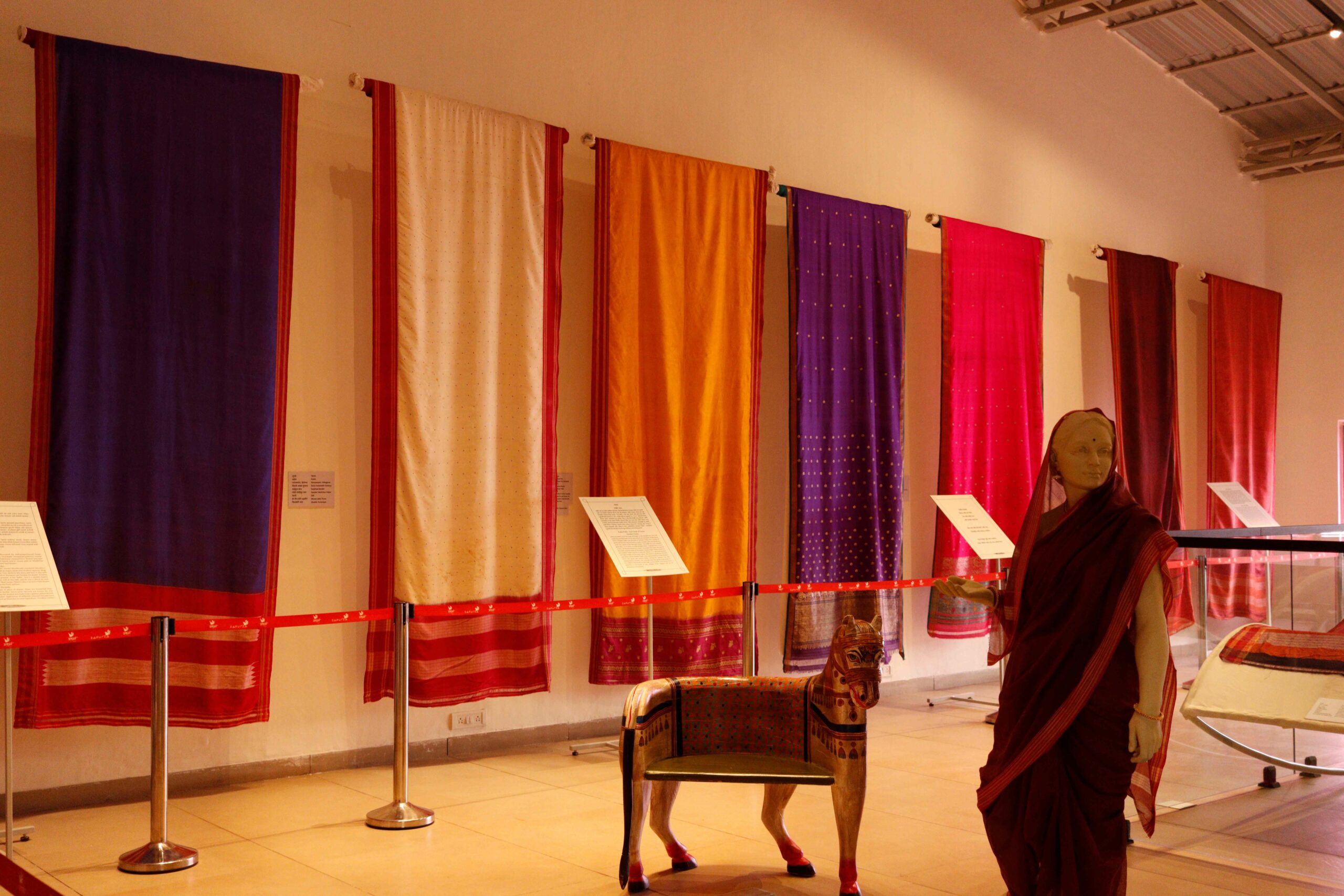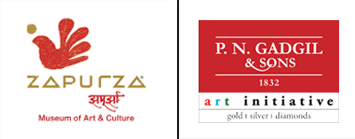Curatorial Note:
Maharashtra is known for its Textiles since centuries. Paithan (Pratishthan) and Ter (Tagar) are well known for its textiles from ancient times. These textiles were been exported to many countries. However, the textile which is known as “Paithani” seems to be evolved from the seventeenth century. Peshwai (the Peshwa Rule) and the Paithani achieved glory during the same time period. And it’s not any coincidence. Peshwas interest and patronage created conducive environment for the Paithani. Maratha Sardars also got Paithani weavers settled in their territories and initiated the Paithani weaving there. Thus Paithani tradition started flourishing in various centres in the Deccan region.
To understand the Paithani tradition, it is necessary to understand what do you mean when you say, Paithani. The distinct feature of the term Paithani is the use of Double interlock tapestry technique in the weaving of it. The double interlock tapestry technique is employed in the pallu of the Paithani, some times even the borders are also woven with this technique.
The double interlock tapestry technique doesn’t have any distinct name in India. Probably this technique was employed first time in India, in Paithan. The textiles woven here with this technique got immensely popular. Then, when this technique was employed in the textiles woven elsewhere, majorly in Deccan region, also were known as “Paithani”. In a way this technique acquired the name “Paithani” for it.
As it’s important to understand the term Paithani by the technique employed, it’s also necessary to understand the aesthetics involved in it. Otherwise we cannot understand the Paithani tradition in its totality. The textiles of a certain region speaks about the aesthetics of that society. The Paithanis in this collection are around 200-100 years old. This collection manifests the rich aesthetics of the Marathi community in that era. We can enjoy the exquisite craftsmanship and design involved in these Paithanis. The balance in the craftsmanship, medium and design creates absolute beauty. This Paithani collection manifests this glaringly. Apart from these three elements, i.e. Craftsmanship, Medium and Design, the next equally important element is the Colour. The colour sensibility in these cotton and silk textiles also talks about the aesthetics of the society.
The Textile Tradition in Maharashtra didn’t limit itself to the utility and the business aspect only. A beautiful Textile Culture has got evolved here. The Textile Culture also emerges through the folk literature, paintings, sculptures. We have also attempted to present this Textile Culture in this exhibition.
It’s an opportunity for the art lovers and the researchers. We can utilise this opportunity for self evaluation as well. We have to judge, in which direction our aesthetics are leading. The comparison of the Paithanis in this collection with the contemporary Paithanis will speak aloud.
Vinay Narkar
Textile Designer / Curator



